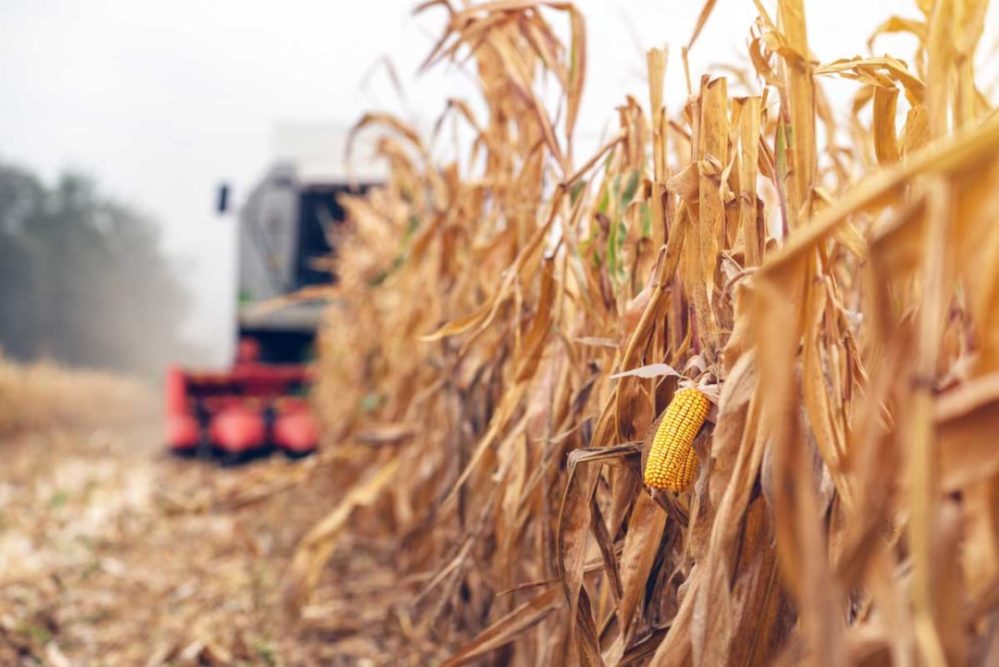WASHINGTON— Much has changed since the US Department of Agriculture on Aug. 12 forecast a record large US corn crop, the second-largest soybean crop ever and record-high average yields for both. A derecho storm flattened hopes of record corn production, and encroaching drought further eroded corn and soybean yield prospects. Meanwhile, the threat of an early winter reared its head with sub-freezing temperatures in parts of the Upper Midwest a week ago, which could threaten some late-maturing crops.
Probably the greatest interest is in corn, and especially corn in Iowa, the nation’s top producing state. The USDA’s good-to-excellent rating for the Iowa corn crop on Aug. 9 (just before the Aug. 10 derecho ravaged about 40% of the cropland in Iowa with hurricane-force winds), was 69%. That rating has dropped weekly since, with the crop rated 43% good to excellent on Sept. 6.
The good-to-excellent rating in Iowa was falling well before being accelerated by the derecho. The rating has dropped steadily from 85% good to excellent as of July 5, reflecting the growing impact of drought moving in from the west. While drought becomes less of an issue as harvest nears, it occurred early enough this season to have an impact. As of Sept. 3, the US Drought Monitor showed nearly all of Iowa abnormally dry at a minimum, with most of the western half of the state in severe to extreme drought. Recent rainfall probably was too little, too late with 28% of the crop in Iowa mature as of Sept. 6.
While lower-growing soybeans escaped the worst of the derecho, the drought was thought to possibly have a greater impact on that crop than on corn. Again, with focus on Iowa, the nation’s second largest soybean growing state after Illinois, the good-to-excellent rating declined to 47% as of Sept. 6 from 70% on Aug. 10 and 84% on July 5.
Corn and soybean futures have been on a terror since the derecho and increasing drought prospects. As of midweek, corn futures were up about 40¢ a bushel, or more than 10%, since early August with the new-crop December contract at $3.60¼ a bushel on Sept. 9. The most active November soybean future had risen for 12 consecutive trading sessions closing Sept. 9 at $9.78¾ a bushel, up $1.12¼ a bushel, or 13%, from early August and at more than a two-year high.
Also fueling the rallies in corn and especially in soybean prices (perhaps more than storms and drought) were ongoing strong sales to China. The USDA, which requires US exports to report sales of 100,000 tonnes or more within 24 hours, reported four consecutive business days of soybean sales to China totaling 1.352 million tonnes. Sales of both commodities to China have been impressive for most of calendar 2020 as China seeks to rebuild stocks and as its hog herd, devastated the past couple of years by African swine fever, rebounds faster than many expected, and as that country seeks to meet expectations of the phase one trade deal with the United States.
The strong export sales of both corn and soybeans were coming at a time when lower production prospects for both crops are expected to be confirmed by the USDA.
The trade, based on a Reuters’ poll released Sept. 4, forecast corn production at 14.898 billion bushels, down 380 million bushels, or 2.5%, from the USDA’s August forecast, which still would leave it the second largest crop ever behind 15.148 billion bushels in 2016. The trade average for the soybean crop was 4.295 billion bushels, down 130 million bushels, or 2.9%, from August, making it the fourth largest crop on record. The trade average corn yield forecast was 178.3 bushels an acre, down 3.5 bushels from the USDA’s August forecast, and for soybeans was 51.8 bushels an acre, down 1.5 bushels. In both cases, the trade expected lower harvested area, with corn at 83.5 million acres, down 500,000 acres from August, and soybeans at 82.9 million acres, down 100,000 acres.
Much more will be known about the forecast size and yield of both crops after the USDA releases its Crop Production report on Sept. 11, but the story won’t completely unfold until harvest gains momentum in key states during October.


